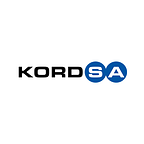Design of Slab on Ground Concrete with Macro Synthetic Fiber
Synthetic macro fibers became available in the 1990s with applications such as slabs-on-ground, pavements, shotcrete, and some precast units. Synthetic macro fibers can be viable alternatives for full replacement of conventional steel bars in concrete elements with continuous support such as slabs-on-ground or shotcrete. They can provide crack resistance enhanced ductility, toughness, and durability. Macro synthetic fiber reinforcement conformity with the standard EN 14889–2 (Fibers — for use in concrete — Part 2: Polymer fibers — Definitions, specifications, and conformity). equivalent diameter> 0.3 mm are referred to as macro synthetic fiber.
Design Method Yield Line Theory Yield
line theory considers formation of plastic hinges on ground and redistribution of moments. These plastic hinges formed enable displacement of elastic region while providing increase in positive bending strength. Plastic hinge formation is used in accurate determination of moment strength and ultimate bearing capacity status of ground. Plastic hinge formation is subject to toughness of stable and is determined by this value named toughness value Re3 (equivalent flexural ratio) being Re3≥%30. (ACI 360R-10, TR 34)
Experimental Study Concrete design: Macro Synthetic Fiber
ASTM C 1609 Standard Test Method for Flexural Performance of Fiber-Reinforced Concrete (Using Beam with Third-Point Loading)
Bending experiments are performed on manufactured samples
(3 pcs 15*15*50 cm) according to ASTM C1609 Standard. In the
experiment performed, prisms are turned on side and their concrete
surfaces contacting concrete forms are placed freely on two steel
supports. Effective span is used as 450 mm in the experiment. Two
equal loads are applied on upper surface of the prism at a distance
of 1/3 of the effective span. Deflection in the middle point of the
sample is measured by LVDT placed in the middle point. The subject
experiment is performed in closed circuit displacement-controlled
experiment machine. All experiments are performed on 28-day samples and each experiment is performed on three samples. Load -
deflection curves are obtained with a loading speed applied to form
up to L/900 (0.5 mm) 0.018 mm/min, L/900-L/150 (0.5 mm- 3 mm)
deflection gap of 0.12 mm/min. Obtained load — deflection curves are
given.
C 1609 Load — Displacement Graphic
Average Axial Tensile Strength of Concrete fctm = 2.90 Mpa
Characteristic Axial Tensile Strength of Concrete (5% fctk (005) =
2.03 Mpa
Flexural Tensile Strength in Bending of Plain Concrete fctk, fl = 4.06
Mpa
Average Compressive Strength of Concrete (cylinder) fcm = 38.00
Mpa
Modulus of Elasticity of Concrete Ecm = 32.84 GPa
Radius of Relative Stiffness (l) = 933.72 mm
Positive Moment Capacity of Slab Mp = 8.11 kNm (Mn*Re3) Kratos
PP 54
Negative Moment Capacity of Slab Mn = 18.02 kNm ( fctk,l*h²/6)
Point Load Control
Wheel Load = 60 kN
Material Safety Factor = 1.6
Contact Area A = 500 mm
Contact Area B = 250 mm
Contact Area radius a = 199.47 mm
a / l = 0.21
Slab Internal Capacity = 366.48 kN
Slab Edge Capacity = 186.79 kN
Internal Load Control Pu > gamaf * P = 366.48 > 96.00 — — OK
Edge Load Control Pu > 0.8 * gamaf * P = 186.79 > 76.80 — — OK
Punching Control Face of the Loaded Area Vp= 0.51 MPa
Vp <= Vmax = 0.51 < 5.28 (VMAX) — — OK
Check for Punching
Length of The Perimeter at The Face of The Loaded Area
Internal = 1,500.00 mm
Edge = 1,250.00 mm
Length of The Perimeter at a Distance 2d From the Loaded Area
(2d distance d = 0.75* slab thickness)
Internal = 3,384.96 mm
Edge= 2,192.48 mm
Punching Check at The Face of The Loaded Area
Internal 1,188.00 kN > 96.00 kN — — OK
Edge = 990.00 kN > 76.80 kN — — OK
Punching Check at The Critical Punching Perimeter
Internal 275.31 kN > 96.00 kN — — OK
Edge 178.32 kN > 76.80 kN — — OK
Joint Cut Dimensions: Maximum 30 times of the Concrete Slab
thickness, X-Y
Joint Cut Width: 3–4 mm, w
Joint Cut Depth: 25% of slab thickness, d
Joint Cut Time: After pouring concrete, it should be made generally
24 hours later (concrete should be strong enough to avoid damage in
cut strips)
Dowel Length, Diameter and Spacing: 450 mm length, with 25 mm
diameter, with 300 mm spacing (ACI 302.1R), DD-S
When solution for Wheel load 60 kN is made according to the
project information given above, for 200 mm slab thickness, 3 kg/m3
Kratos PP 54 Macro Synthetic Fiber product enabled required load
and moment capacity and observed that it can be viable alternatives
for full replacement of steel bars.
SOURCES:
• ASTM C 1609: Standard Test Method for Flexural Performance of
Fiber-Reinforced Concrete (Using Beam With Third-Point Loading)
• TR 34: Technical Report №34, A guide to Design and
Construction
• ACI 544.4R-18: Guide to Design with Fiber-Reinforced Concrete
• ACI 360R-10: Guide to Design of Slabs-on Ground
• ACI 302.1R: Guide for Concrete Floor and Slab Construction
Written by
Burak Erdal,
Project Leader, Kordsa
Uğur Alparslan,
Technology Manager, Kordsa
İlhan İzmit
Yarn Production Group Manager, Kordsa
